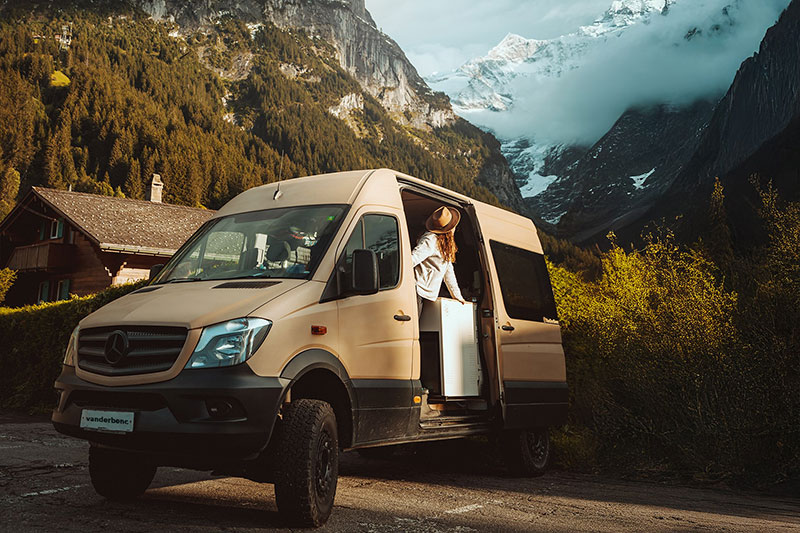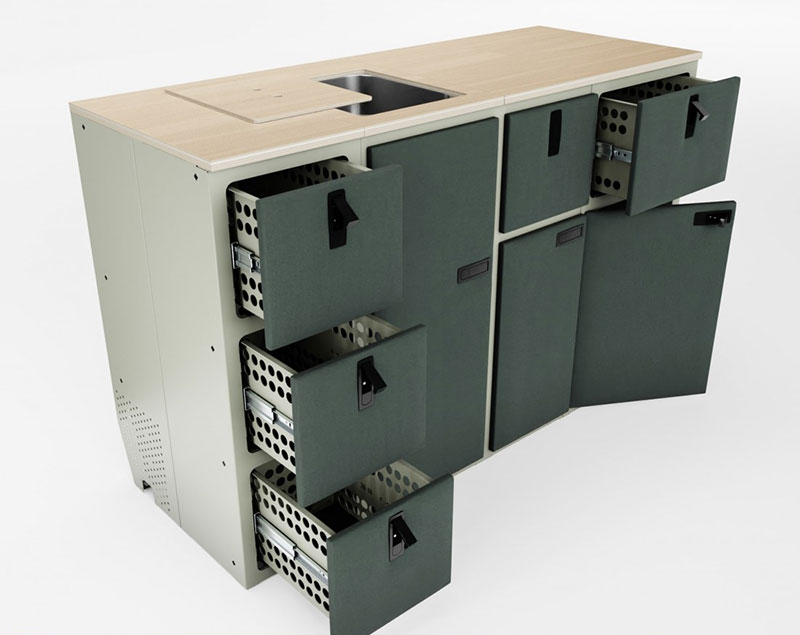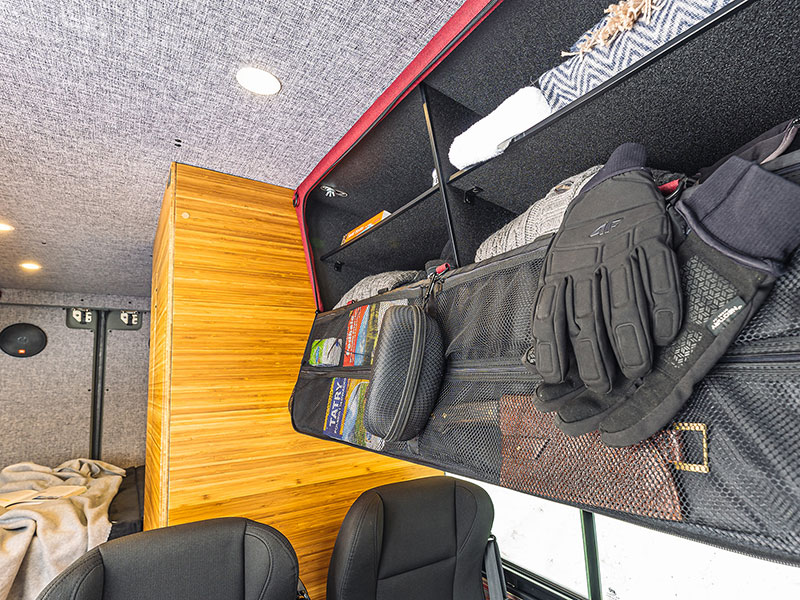Whether bought, rented or home-converted, "vanlife" became the "in" thing; and when the pandemic receded the campervan craze remained. People had discovered a new freedom and weren't going to give it up any time soon. The combination of freedom to go where you want and sleep where you want was appealing, and the secret was being able to not just pick and choose your destination, but custom design your own interior to get an environment that suits you.
With the boom in demand pre-converted campervan prices shot through the roof, so many turned to home conversion. Home conversion, however, is not always as straightforward as it looks. At it's most basic it means putting something to sleep on in the back of the van and making do with traditional pubs, cafes and restaurants for your food and local services for your other needs. For most people though the conversion requires a set of very specific essentials:
- Sonewhere to sleep - commonly a bench style seat that extends to form a bed
- Storage - somewhere to store everything from the clothes you want to take with you to food, cooking utensils and bedding to outdoor adventure equipment
- Kitchen - Somewhere to cook and wash up, with a stove or microwave and sink.
- Lighting - This includes a battery and a means of charging it, whether from the engine, solar panels on the roof or a maine connection for an electric hook-up on a site.
- Insulation - insulation to keep you warm in winter and cool in the heat of the summer.
Of course these are just the basics and you can add any number of extras to the list from external racks for bicycles and kayaks to showers and toilets. Whatever your choice there are two certainties when it comes to a conversion; it takes good organisation and it's going to make your van considerably heavier. This additional weight will have an impact on everything from fuel consumption to handling, while there are also legal limits on the overall weight of every vehicle. It makes sense, therefore, to look at the best ways of keeping the weight down while maintaining both the quality and the functionality of the fittings.
With a limited number of favourite "base" van models the optimal layouts for different number of "berths" and uses have been pretty well established, and a whole industry has grown up anround the use of CNC to precision cut and bend materials to use for cupboards, worksurfaces, wardrobes and pretty much any fitment you're going to require. The big question is how to install these lightweight cabinets for campers, and there's a good argument for choosing a modular system.
The advantage of mudular systems is that they components have been designed to fit perfectly together, but allow the freedom of choice of which modules to install to suit your needs, and an option to amend these choices when your needs change without requiring a complete refit. Modular fittings are not limited to the kitchen and wardrobes, however, with options for overhead storage and even inside doors. Lightweight and modular furniture and fittings also allow for quick assembly and disassembly; meaning you can be on the road faster and lighter.
Choosing a lightweight option for your furniture and fittings not only helps keep your van within the legal weight limits but it makes installation simpler. Heavy materials require heavy duty fixings to ensure they're held well in place, while lighter weight materials, such as aluminium and lightweight plywood, make it easier to secure the modules; whether to the van walls directly or using an internal frame or rail system. Using a frame can allow you to use pretty much every available centimetre of the inside of the van, spanning bulkhead reinforcements rather taking up valuable "living" space.
While lightweight makes sense for weight limits and fuel consumption it also allows yopu a bit of leeway in the finishings you choose. No need for bare wood throughought. The weight saved can allow you to make more use of uphlstered fabric finishes to make your camper feel more of a home than just a vehicle. The other important aspect to take into account during a convversion is durability and this is where aluminium and fabrics again have an advantage. Aluminium is rust free and while fabrics can wear the modular design makes swapping units out a far easier job than dismantling whole pieces of furniture. Thge same applies if you're looking for a change of colour; swap out modules as and when required is easy with a modular system attached to an internal frame - and no heavy panels to try and manhandle in a limited space.
Fast and light has become somethiing of an ethos over recent years and while we can't recommend you go too fast in your campervan, you can speed up your conversion by choosing modular, lightweight cabinets for campers and a quick install frame system and light can have multiple benefits. Using modern manufacturing techniques like CNC (computer numerical control) to cut, carve and engrave materials and precision design it's possible to achieve a blend of aesthetics and functionality that can be adapted to your own personal choice.
The road ahead awaits.



